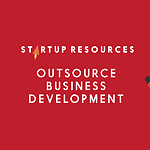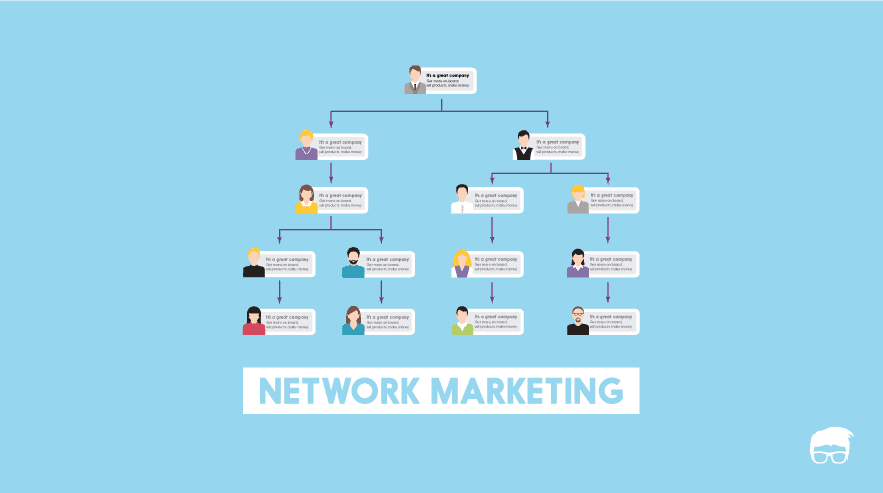Business tasks are not limited to just the core offering. There’s a network of functions and processes that are linked to the core task. For example, a smartphone brand’s responsibilities are not limited to just developing, designing, and selling smartphones. It also includes R&D, manufacturing, assembling, marketing, customer relationship management, software development, repair, replacement, and much more.
While the company can do all these tasks by itself, the more preferred practice is outsourcing some of these tasks to third parties that are experts.
What Is Outsourcing?
Outsourcing is a business practice where a company hires a third-party to perform its tasks, operations, jobs, or processes, rather than doing the work in-house.
The word outsourcing is a portmanteau of outside and resourcing, which means paying an outsider (company, freelancer, or other business) to get the work done. This work includes business processes (like payroll, claim settlement, etc.), operational tasks (like assembling, distribution, etc.), and/or non-core functions (like legal functions, hiring, etc.) depending upon the nature and type of business.
Types Of Outsourcing
There’s no one type of outsourcing that fits all needs. It is categorised into different types based on the kind of activity outsourced and the location it is outsourced to.
Based On The Type Of Activity
Outsourcing can be categorised into three types based on the needs of the business. These are:
Business Process Outsourcing
Business process outsourcing is the most common type of outsourcing. It refers to contracting a business process to a third-party service provider who excels in performing such tasks. Usually processes that deals with repetitive tasks like support processes, administrative processes, and/or non-core management processes are outsourced. For example:
- IT Outsourcing: It refers to outsourcing technology-related services and resources for a part or the entirety of an information technology department, function, or process. For example:
- A small business signing a contract with a third-party service provider to develop its mobile application and website.
- A SAAS company signing a contract with a third-party service provider to store and manage its user data.
- Manufacture Outsourcing: Manufacturing costs can be extremely high as it requires the business to buy/rent/lease space, machinery, and hire a specialised workforce. To save this cost, a business may outsource the whole manufacturing department through a contract with a third-party manufacturer. For example:
- A smartphone company outsourcing its product manufacturing to a company in China.
- A TV brand outsourcing its parts manufacturing to another country.
- Operational Outsourcing: Certain operational processes like repairs, supply, distribution, etc., are often outsourced to third parties.
- Other Process Specific Outsourcing: Other specific processes like customer support, bookkeeping, accounting, healthcare, engineering, etc. that are driven by set procedures and rules can be outsourced to third-party service providers. For example:
- A small business may outsource its telephonic customer support to a third party.
- A digital marketer in the USA may outsource his management processes to a virtual assistant in India who handles the emails and schedules meetings for him.
Knowledge Process Outsourcing
Usually, there are tasks that are important but too complex for the in-house team to perform. Such tasks may require the team to have additional training and/or a professional license to meet the requirements. Since this isn’t that feasible for every company, most outsource these professional tasks to the third-party service providers that have a high level of subject matter expertise.
For example:
- A small business may sign a contract with a financial service provider to do its taxes and help it prepare its income statements.
- A fragrance brand may appoint a third-party to handle research and development.
Project Outsourcing
Usually, when the demand exceeds the resources of a company, it may decide to outsource an entire project to an external service provider. For example:
- Legal companies may outsource their workload to freelance attorneys to keep up with their workload.
- An advertising agency may outsource its projects to a freelance copywriter.
Based On Location
A company may outsource its work within the country, in a nearby country, or some other part of the world.
- Onshore Outsourcing: Also called onshoring or reshoring, this outsourcing type involves outsourcing business operations to the same country as the company’s headquarters. For example, a company in New York outsourcing business operations to California.
- Nearshore Outsourcing: Nearshoring involves outsourcing business operations to geographically close countries. For example, a company in New York outsourcing business operations to Mexico City.
- Offshore Outsourcing: Offshoring means outsourcing business operations to far off countries. For example, a company in New York outsourcing business operations to India.
Reasons For Outsourcing
The most basic answer to ‘why do companies outsource?’ is because outsourcing benefits the company in some way or the other. Some of the reasons why company outsource are:
- Growth Opportunities: Often, limited resources limit the growth of a business. Outsourcing helps overcome such limitations.
- Temporary Processes: Outsourcing temporary processes helps the business focus more on core tasks that drives long-term revenues.
- High Costs: There are times when performing a task in-house prove to be costlier than getting it done somewhere else. In such cases, outsourcing proves to be a better option.
- Benefit From Other’s Experience: Usually, processes are outsourced to third-party service providers who provide their expertise to the business after signing the outsourcing contract.
- Better Focus: By outsourcing, the business shifts its focus to the processes that matter more.
How Does Outsourcing Work?
Outsourcing works on a simple concept of agreement between two parties. The host business decides on the processes or projects that need to be outsourced. It then finds the partner company either on some outsourcing websites, through recommendation, or other means.
These two parties sign contracts for the work that needs to be done. Different contracts come with different terms that include the use of the brand name, quality instructions, competitor affiliation, etc.
The outsourcing companies usually hire its own staff and works from its own office. Moreover, this outsourcing company operates on a business model that may be completely different from the partner company. For example, Apple’s business model revolves around the development and sales of its products to the final consumer. Its outsourcing partner Wistron that assembles iPhones operates on just a manufacturing and warehousing business model that’s different from Apple.
Outsourcing Pros And Cons
This business practice comes with its own set of advantages and disadvantages. These are:
Outsourcing Advantages
- Reduced Costs: Outsourcing, especially offshoring, helps the company reduce its costs.
- Better Focus: By making others do the non-core tasks, businesses focus better on the profit-driving core tasks.
- Increased Efficiency: Outsourcing involves handing the work to the experts. This results in more efficiency.
- Better Innovation: With more people comes new and innovative ideas.
- Shared Risks: Risks are shared between two parties through a contract.
- Targeted Efforts: Outsourcing also helps in targeted efforts as the tasks are handed to the experts.
Outsourcing Disadvantages
- Lack Of Control: Since outsourcing companies operate on their own, there’s a lack of control.
- Communication Problems: Usually, there’s a communication problem when the two companies operate in different time zones.
- Security Risks: Outsourcing involves the sharing of sensitive information. Since the other company is an independent body, there’s always a risk of security.
- Financial Risks: Often, when important tasks are handed to a third-party service provider, any failure to perform the task or other problem may pose financial risks to the business.
Outsourcing Examples
Almost every company that exists today outsource some tasks to third parties to operate better at least once in its lifetime. Some examples of the big companies that benefitted fro
In its early days, Whatsapp founders outsourced the task of app development to a Russian developer, Igor Solomennikov, whom they found on RentACoder.com.
P&G
P&G outsources its research and development process to different third-parties service providers all over the world. This has worked wonders for the company, such that the company now gets 50% of its innovation from outside.
Apple
Apple iPhones, even though designed in the USA, are manufactured in countries like Mongolia, China, Korea and Taiwan. The company does this to save not only money but also time.
Outsourcing vs Insourcing
Basis | Outsourcing | Insourcing |
|---|---|---|
Definition | Outsourcing is a business practice where a company hires a third party to perform its tasks, operations, jobs, or processes rather than doing the work in-house. | Insourcing is a business practice where a company uses its own personnel and resources rather than outsourcing it to a third-party service provider. |
Benefits | More efficiency Low costs More innovation Better focus on other activities | More control Better communication More opportunities for own personnel Less security risk |
Limitations | Less control Communication problems Less opportunities for own personnel More security risk | Less efficiency High costs Less innovation Divided focus |
Go On, Tell Us What You Think!
Did we miss something? Come on! Tell us what you think about our article in the comments section.
A startup consultant, digital marketer, traveller, and philomath. Aashish has worked with over 20 startups and successfully helped them ideate, raise money, and succeed. When not working, he can be found hiking, camping, and stargazing.




![How To Outsource Customer Service? [Detailed Guide] outsource customer service](https://www.feedough.com/wp-content/uploads/2022/09/outsource-customer-service.webp)




